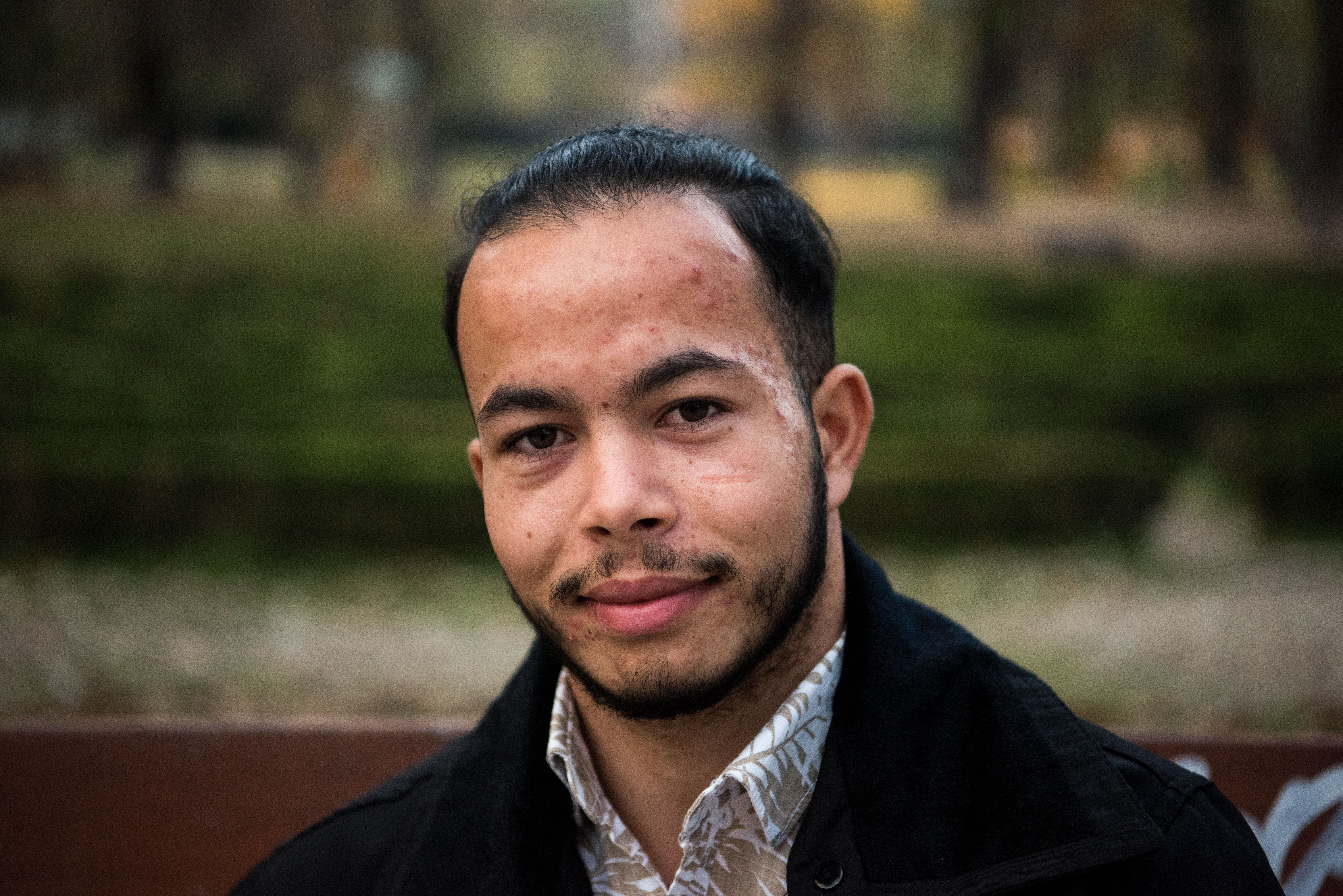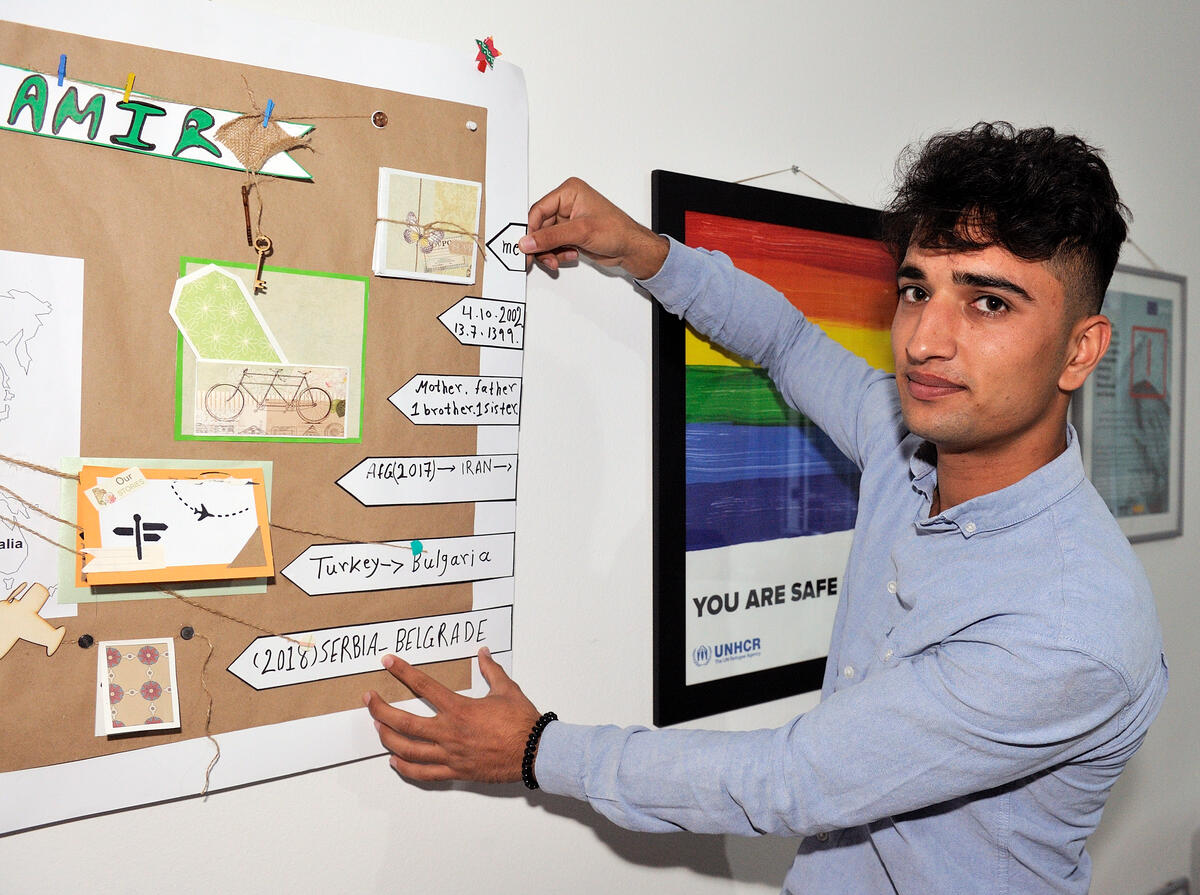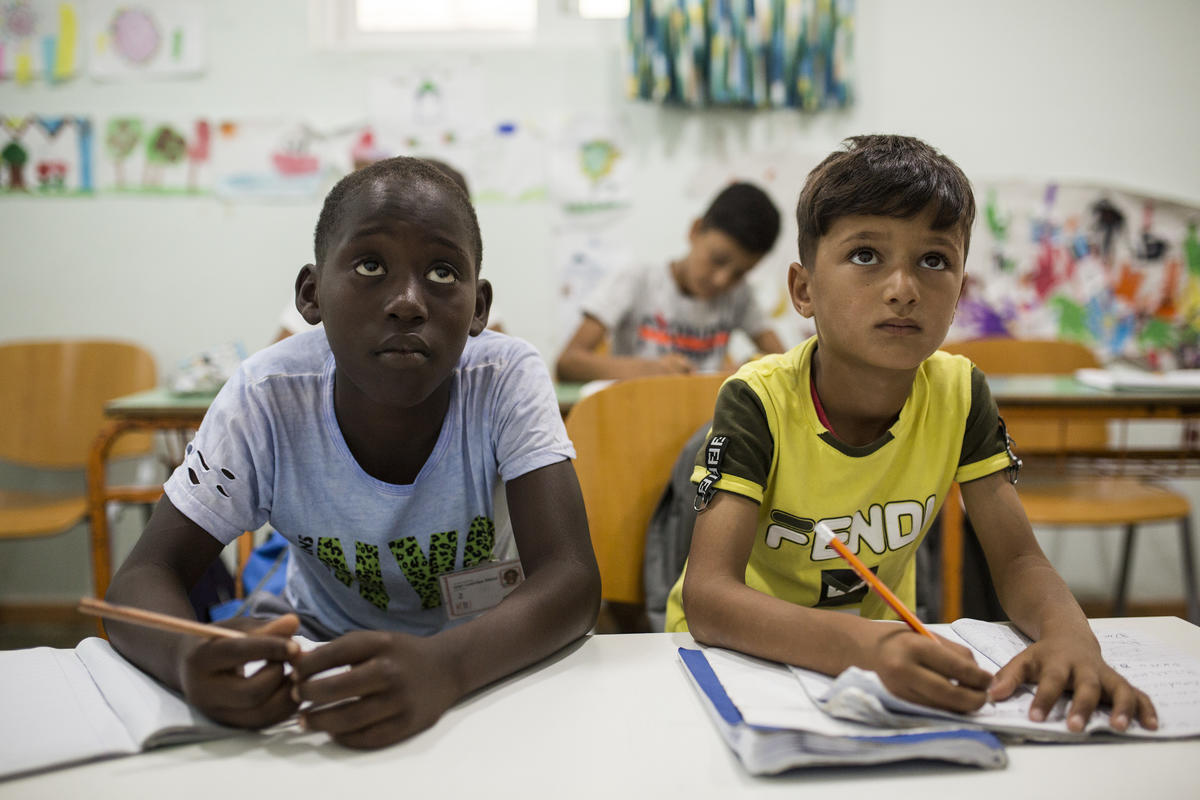Kosovo Crisis Update
Kosovo Crisis Update
Funding
As of 14 July, UNHCR had received contributions amounting to $170 million against its appeal for a total of $389 million for its Kosovo operations during 1999. The largest single donor to date is the European Commission, followed by the USA, Japan and Norway. Of the $170 million received to date, $21 million or 12 percent has come from private (non-governmental) donors. In Italy alone, private donors have contributed more than $13 million to UNHCR's Kosovo emergency operation, making private donors in Italy the fifth largest contributor to UNHCR's operation.
Returns
Around 15,000 refugees have returned to Kosovo voluntarily from countries outside the immediate region. The number includes refugees who departed from the FYR of Macedonia under the humanitarian evacuation programme as well as refugees who travelled spontaneously, mainly to Turkey.
Around 11,000 refugees have returned from Turkey, mainly Kosovars who fled there at the outset of the conflict, as well as some of the evacuees. 18,000 refugees from Kosovo were sheltered in Turkey at the height of the conflict. The returnees have travelled overland, through Bulgaria and the FYR of Macedonia. The camp at Kirklareli which housed 8,700 at the height of the emergency now has just 3,200 residents.
Other voluntary repatriations so far include those from Australia, Austria, Canada, Germany, Italy and the Netherlands, for a combined total of around 4,000.
The number of refugee returns from within the immediate region has dropped substantially in recent days, as the repatriation nears completion. In the past two days (July 14-15), there were just 7,400 returns from Albania, the FYR of Macedonia and Montenegro, bringing the total so far to 662,000.
UNHCR, IOM, AFOR and KFOR on Friday will cooperate in the first return flight of vulnerable refugees directly to Pristina airport from Korca in southern Albania. Three helicopter flights of about 25 individuals, including medical cases, are expected to arrive in Pristina between today and next Wednesday.
After the exodus
With most of the refugees in Albania and the FYR of Macedonia already back in Kosovo, UNHCR is gathering remaining refugees in smaller sites and moving ahead to clean up the sites of camps being shut down.
Of the seven camps that sheltered up to 100,000 refugees in the FYR of Macedonia, only four remain (Senokos, Cegrane, Neprosteno and Stenkovec II), with a combined population of around 8,600 refugees. The Senokos site will be shut down soon. The remaining Albanian refugees will then initially be housed at Cegrane and Neprosteno, while the Stenkovec II camp will be used to house the estimated 1,500-2,000 Roma refugees from Kosovo.
UNHCR hopes to be able to close all the camps by early October and to house remaining refugees in the FYR of Macedonia in collective centres. The facilities should soon be allocated by the government and necessary rehabilitation work will be carried out under UNHCR auspices, at an estimated cost of $2 million.
NGO partners are participating in the clean up and rehabilitation of the now empty camp sites. CARE, with aid from Norway, plans to develop a vineyard and undertake other agricultural activities at Cegrane. CARE is also preparing rehabilitation plans for Stenkovec II. The uncompleted camp site at Vrapciste, which never had to be used, will be left for industrial development by the government.
Rehabilitation work to be done at the former camp sites in the FYR of Macedonia includes the removal of latrine tanks, excavation and backfilling of latrines and land grading and reseeding with grass.
In Albania, an assessment is currently being conducted to determine the number of refugees still in camps and collective centres, along with those with host families. It is estimated that there are still some 16,700 refugees in just a few camps. During the emergency, 49 tented sites held around 80,000 refugees and 282 collective centres had an estimated 100,000 Kosovars.
Many camps have closed down. Assets are being moved to Kosovo and rehabilitation work is being done by NGOs. However, the security situation in many areas is precarious and some camps were looted as the refugees were departing. As in the FYR of Macedonia, it is planned to house remaining refugees who do not have host family accommodation in collective centres. UNHCR has rehabilitated 38 collective centres which can hold up to 20,000 refugees who might remain in Albania through the winter.
Minorities
Many of the Roma leaving Kosovo have fled to Montenegro. The Roma population there remains very mobile, and those displaced from Kosovo are difficult to distinguish from Roma coming from other parts of Serbia or Montenegro.
However, UNHCR staff report that many Roma from Kosovo have joined the Roma settlement at Konic, outside Podgorica, where around 5,000 Montenegrin Roma have long been staying. UNHCR estimates that they were joined by around 2,000 Roma from Kosovo during the past year and another 1,000 since the KFOR deployment in Kosovo.
UNHCR is working out a registration system for the new arrivals and has provided the settlement with tents, blankets, mattresses and cooking stoves.
A number of NGOs are also active in the area and the Italian Consortium for Solidarity is UNHCR's main partner for services to the Roma community. However, the site is fundamentally unsuitable and the lack of clean water, sanitation and garbage collection remain serious health risks for the population there.
Elsewhere in Montenegro, a total of 14 collective centres still house displaced people from Kosovo, including Serbs, Montenegrins, Roma and Albanians.
Meanwhile, hundreds of Kosovo Serb displaced persons have reportedly arrived in the predominantly Serb Leposavic and Zubin Potok areas of northern Kosovo over the last few days, apparently returning from the Kraljevo and Kragujevac areas of Serbia proper.
Witnesses told UNHCR the IDPs arrived by bus. Some reportedly went directly to the train station to head south to the Obilic and Kosovo Polje areas. Others have gone by car and bus. French KFOR troops at the border with Serbia said 1,500 to 1,700 persons cross the border each day in both directions, or approximately 450 vehicles.
Serbia
UNHCR staff have been monitoring the situation in the Presevo/Bujanovac/Miratovac area of southern Serbia, bordered to the west by Kosovo, to the south by the FYR of Macedonia and to the east by Bulgaria.
The area had a majority ethnic Albanian population before the war. Many Serbs leaving Kosovo transit though Presevo, while Roma from Kosovo have fled to the Presevo area. At the same time, an undetermined number of ethnic Albanians, feeling insecure in the area, have left, either for Kosovo itself or for the FYR of Macedonia. Those who have fled to the FYR of Macedonia are mainly staying with host families, with some few still in the camps.
Some villages near Bujanovac are empty and houses have been looted and some burned. In the Miratovac area, farmers say that they must obtain a "white card" from the Serbian authorities to proceed to their fields every day to work the land. There is a substantial Yugoslav army presence in the area, especially on the roads leading to Kosovo.
Information programme for Kosovo
UNHCR is working with partners, and in particular with the NGO Media Action International, to meet the information needs of the population in Kosovo. The first UNHCR/MAI radio programme went on the air in Kosovo yesterday 15 July. The UK Department for International Development (DFID) is also a supporter of the information activities.
The broadcast is the beginning of an information programme intended both for the returnee population in Kosovo as well as for the people who never left the province. Radio broadcasts in Serbian and Albanian will inform the population about humanitarian issues in the area, as has been done for the refugee population in the FYR of Macedonia and Albania, and about UNHCR and UNMIK's intention to protect and assist all population groups.
At present, only a few small private radio stations are operating in Urosevac (Ferizaj) as well as in Prizren, Gnjilane and Pristina, but more are expected to start up soon. The U.N. mission in Kosovo (UNMIK) is also planning to establish a U.N. radio in the province.
At the same time, UNHCR and MAI are continuing their co-operation with broadcasters in Albania and in the FYR of Macedonia. Their broadcasts, including the UNHCR/MAI programme "In the Name of Humanitarianism" can be heard widely within Kosovo.
A printed "Humanitarian News Bulletin" will also be prepared and distributed regularly throughout Kosovo, as was the case in the refugee camps in Albania and the FYR of Macedonia.








